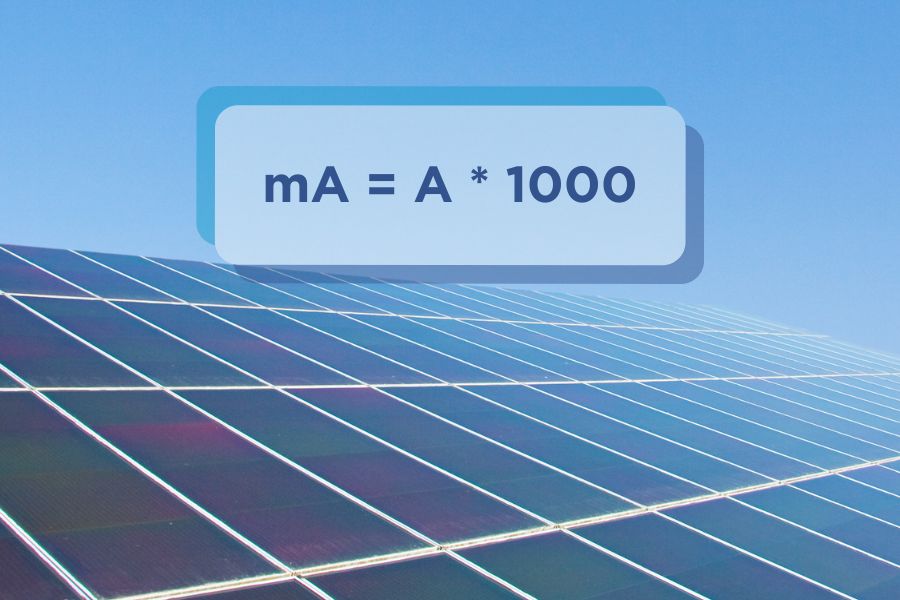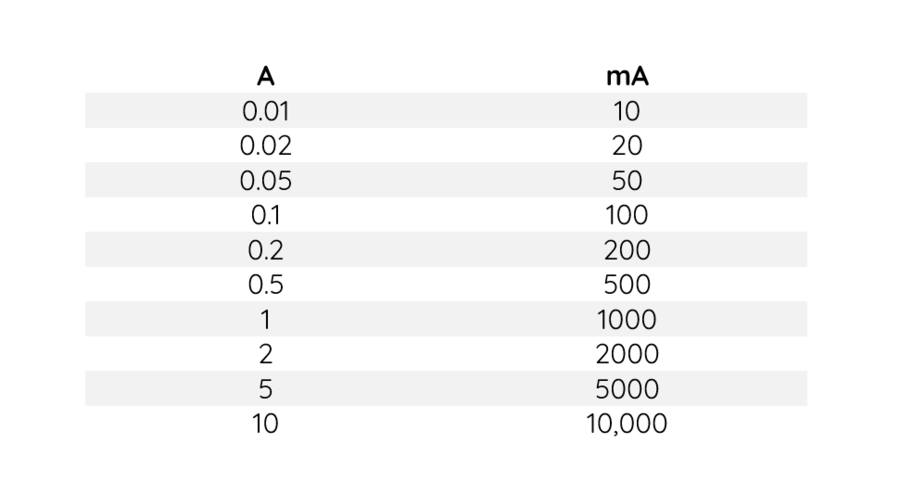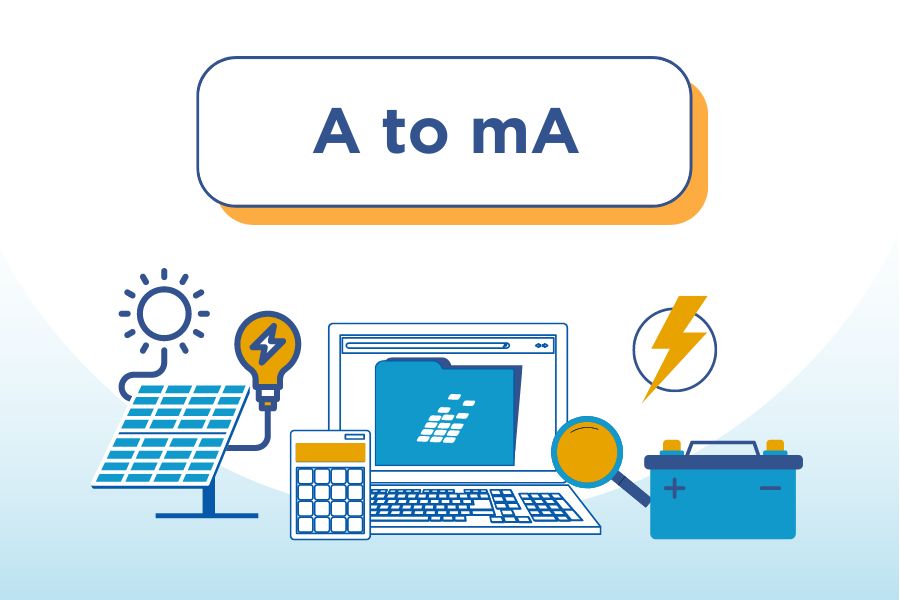A * 1,000 =
0.00 mA
Conversion formula: mA = A * 1,000
What Is an Amp?
Amp is short for ampere, and according to the international system of units (SI unit), ampere is the SI base unit of electric current. It may be represented with A.
An amp or ampere is the movement of one Coulomb of charge per second through a point in a circuit.
What Is a Milliamp?
Milliamp is short for milliampere. It measures the same quantity as ampere (both are units of electrical current). However, it has a smaller magnitude of measurement than ampere.
While ampere measures electric current in multiples of one, milliampere does so in thousandths. Hence, the milli metric prefix in milliampere.
A milliamp represents the movement of one thousandth (1/1000) Coulomb of charge per second through a point.
Milliamp may be represented with mA.
How to Convert Amperes to Milliamperes (A to mA)

To convert ampere to milliampere, an ampere to milliampere converter multiplies the ampere value by 1000:
\(mA = A * 1000\)
So, if we want to convert 20 A to mA, we’ll do:
\(20 * 1000 = 20,000\ mA\)
Similarly, if we want to convert 5.5 A to mA, we’ll do:
\(5.5 * 1000 = 5,500\ mA\)
In the same way, we’ll convert 62.5 A to mA:
\(62.5 * 1000 = 62,500\ mA\)
Quick Conversion Chart of Amperes to Milliamperes (A to mA)

Why Convert Amps to Milliamps?
We do amps to milliamps conversion to ensure accurate estimations. While both are electric current measurement units, their magnitudes are not the same. Ampere measures in multiples of one. Milliampere, on the other hand, measures in multiples of one thousandth (1/1000).
As such, if we use any of both units in place of the other, our estimation would be one thousand times less or more than it should be. In summary, we do an ampere to milliampere conversion for accuracy.
When to Convert Ampere to Milliampere
Knowing when to convert ampere to milliampere largely depends on the other quantities and measurement units we work with. Typically, when doing calculations involving quantities whose units are SI units, we must use the SI base unit of electrical current – ampere. But when that isn’t the case, we may have to do an ampere to milliampere conversion.
One easy way to know when to convert ampere to milliampere is when the unit of one of the other quantities has “mA” in it. For instance, if we were trying to calculate how long a 20,000 mAh battery will power a 3.2-volt solar lamp post whose wattage is 2.4 watts, we would convert A to mA.
Here’s why we will do an A to mA conversion
- To estimate how long the battery can provide juice to the lamp post, we’ll start by estimating the lamp post’s amperage:
\(\displaystyle{\frac{2.4}{3.2}} = 0.75\ A\)
- Next, to calculate how long the battery can power the lamp post, we’ll divide the battery’s capacity by the lamp post’s amperage. Here’s where the reason we need an Ampere to Milliamps conversion gets clearer. If we divide the battery’s capacity by 20,000 mAh by the lamp post’s amperage of 0.75 A, we would estimate the lighting time to be over 26,000 hours. But that is wrong.
- So, instead of using 0.75 A in our calculation, we convert it to milliamps first. To convert 0.75 A to mA, we’ll do:
\(0.75*1000 = 750\ mA\)
- After our Ampere to Milliamps conversion, we can now divide the battery capacity by the lamp post’s amperage in mA:
\(\displaystyle{\frac{20,000}{750}} = 26.7\ hours\)
How Many Milliamperes Are in an Ampere?
There are 1000 milliamperes in an ampere.
How to Convert Milliamps to Amps (mA to A) Conversion
A milliamps to amps conversion is pretty much the reverse of an amperes to milliamps conversion. Instead of multiplying the value of amperes by 1000, we’ll divide the value of milliamps by 1000.

